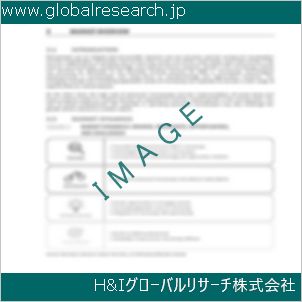1 Report Overview
1.1 Study Scope
1.2 Market Analysis by Type
1.2.1 Global Crude Transportation Market Size Growth Rate by Type: 2018 VS 2022 VS 2029
1.2.2 Road Freight
1.2.3 Ocean Freight
1.2.4 Pipelines Transportation
1.2.5 Others
1.3 Market by Application
1.3.1 Global Crude Transportation Market Growth by Application: 2018 VS 2022 VS 2029
1.3.2 Oil and Gas
1.3.3 Mining
1.3.4 Manufacturing
1.3.5 Others
1.4 Study Objectives
1.5 Years Considered
1.6 Years Considered
2 Global Growth Trends
2.1 Global Crude Transportation Market Perspective (2018-2029)
2.2 Crude Transportation Growth Trends by Region
2.2.1 Global Crude Transportation Market Size by Region: 2018 VS 2022 VS 2029
2.2.2 Crude Transportation Historic Market Size by Region (2018-2023)
2.2.3 Crude Transportation Forecasted Market Size by Region (2024-2029)
2.3 Crude Transportation Market Dynamics
2.3.1 Crude Transportation Industry Trends
2.3.2 Crude Transportation Market Drivers
2.3.3 Crude Transportation Market Challenges
2.3.4 Crude Transportation Market Restraints
3 Competition Landscape by Key Players
3.1 Global Top Crude Transportation Players by Revenue
3.1.1 Global Top Crude Transportation Players by Revenue (2018-2023)
3.1.2 Global Crude Transportation Revenue Market Share by Players (2018-2023)
3.2 Global Crude Transportation Market Share by Company Type (Tier 1, Tier 2, and Tier 3)
3.3 Players Covered: Ranking by Crude Transportation Revenue
3.4 Global Crude Transportation Market Concentration Ratio
3.4.1 Global Crude Transportation Market Concentration Ratio (CR5 and HHI)
3.4.2 Global Top 10 and Top 5 Companies by Crude Transportation Revenue in 2022
3.5 Crude Transportation Key Players Head office and Area Served
3.6 Key Players Crude Transportation Product Solution and Service
3.7 Date of Enter into Crude Transportation Market
3.8 Mergers & Acquisitions, Expansion Plans
4 Crude Transportation Breakdown Data by Type
4.1 Global Crude Transportation Historic Market Size by Type (2018-2023)
4.2 Global Crude Transportation Forecasted Market Size by Type (2024-2029)
5 Crude Transportation Breakdown Data by Application
5.1 Global Crude Transportation Historic Market Size by Application (2018-2023)
5.2 Global Crude Transportation Forecasted Market Size by Application (2024-2029)
6 North America
6.1 North America Crude Transportation Market Size (2018-2029)
6.2 North America Crude Transportation Market Growth Rate by Country: 2018 VS 2022 VS 2029
6.3 North America Crude Transportation Market Size by Country (2018-2023)
6.4 North America Crude Transportation Market Size by Country (2024-2029)
6.5 United States
6.6 Canada
7 Europe
7.1 Europe Crude Transportation Market Size (2018-2029)
7.2 Europe Crude Transportation Market Growth Rate by Country: 2018 VS 2022 VS 2029
7.3 Europe Crude Transportation Market Size by Country (2018-2023)
7.4 Europe Crude Transportation Market Size by Country (2024-2029)
7.5 Germany
7.6 France
7.7 U.K.
7.8 Italy
7.9 Russia
7.10 Nordic Countries
8 Asia-Pacific
8.1 Asia-Pacific Crude Transportation Market Size (2018-2029)
8.2 Asia-Pacific Crude Transportation Market Growth Rate by Region: 2018 VS 2022 VS 2029
8.3 Asia-Pacific Crude Transportation Market Size by Region (2018-2023)
8.4 Asia-Pacific Crude Transportation Market Size by Region (2024-2029)
8.5 China
8.6 Japan
8.7 South Korea
8.8 Southeast Asia
8.9 India
8.10 Australia
9 Latin America
9.1 Latin America Crude Transportation Market Size (2018-2029)
9.2 Latin America Crude Transportation Market Growth Rate by Country: 2018 VS 2022 VS 2029
9.3 Latin America Crude Transportation Market Size by Country (2018-2023)
9.4 Latin America Crude Transportation Market Size by Country (2024-2029)
9.5 Mexico
9.6 Brazil
10 Middle East & Africa
10.1 Middle East & Africa Crude Transportation Market Size (2018-2029)
10.2 Middle East & Africa Crude Transportation Market Growth Rate by Country: 2018 VS 2022 VS 2029
10.3 Middle East & Africa Crude Transportation Market Size by Country (2018-2023)
10.4 Middle East & Africa Crude Transportation Market Size by Country (2024-2029)
10.5 Turkey
10.6 Saudi Arabia
10.7 UAE
11 Key Players Profiles
11.1 DHL
11.1.1 DHL Company Detail
11.1.2 DHL Business Overview
11.1.3 DHL Crude Transportation Introduction
11.1.4 DHL Revenue in Crude Transportation Business (2018-2023)
11.1.5 DHL Recent Development
11.2 DB Schenker
11.2.1 DB Schenker Company Detail
11.2.2 DB Schenker Business Overview
11.2.3 DB Schenker Crude Transportation Introduction
11.2.4 DB Schenker Revenue in Crude Transportation Business (2018-2023)
11.2.5 DB Schenker Recent Development
11.3 FedEX
11.3.1 FedEX Company Detail
11.3.2 FedEX Business Overview
11.3.3 FedEX Crude Transportation Introduction
11.3.4 FedEX Revenue in Crude Transportation Business (2018-2023)
11.3.5 FedEX Recent Development
11.4 UPS
11.4.1 UPS Company Detail
11.4.2 UPS Business Overview
11.4.3 UPS Crude Transportation Introduction
11.4.4 UPS Revenue in Crude Transportation Business (2018-2023)
11.4.5 UPS Recent Development
11.5 AP Moller-Maersk
11.5.1 AP Moller-Maersk Company Detail
11.5.2 AP Moller-Maersk Business Overview
11.5.3 AP Moller-Maersk Crude Transportation Introduction
11.5.4 AP Moller-Maersk Revenue in Crude Transportation Business (2018-2023)
11.5.5 AP Moller-Maersk Recent Development
11.6 DSV
11.6.1 DSV Company Detail
11.6.2 DSV Business Overview
11.6.3 DSV Crude Transportation Introduction
11.6.4 DSV Revenue in Crude Transportation Business (2018-2023)
11.6.5 DSV Recent Development
11.7 Kuehne+ Nagel
11.7.1 Kuehne+ Nagel Company Detail
11.7.2 Kuehne+ Nagel Business Overview
11.7.3 Kuehne+ Nagel Crude Transportation Introduction
11.7.4 Kuehne+ Nagel Revenue in Crude Transportation Business (2018-2023)
11.7.5 Kuehne+ Nagel Recent Development
11.8 Yusen Logistics
11.8.1 Yusen Logistics Company Detail
11.8.2 Yusen Logistics Business Overview
11.8.3 Yusen Logistics Crude Transportation Introduction
11.8.4 Yusen Logistics Revenue in Crude Transportation Business (2018-2023)
11.8.5 Yusen Logistics Recent Development
11.9 NGL Energy Partners LP
11.9.1 NGL Energy Partners LP Company Detail
11.9.2 NGL Energy Partners LP Business Overview
11.9.3 NGL Energy Partners LP Crude Transportation Introduction
11.9.4 NGL Energy Partners LP Revenue in Crude Transportation Business (2018-2023)
11.9.5 NGL Energy Partners LP Recent Development
11.10 Genesis Energy
11.10.1 Genesis Energy Company Detail
11.10.2 Genesis Energy Business Overview
11.10.3 Genesis Energy Crude Transportation Introduction
11.10.4 Genesis Energy Revenue in Crude Transportation Business (2018-2023)
11.10.5 Genesis Energy Recent Development
11.11 Holly Energy Partners
11.11.1 Holly Energy Partners Company Detail
11.11.2 Holly Energy Partners Business Overview
11.11.3 Holly Energy Partners Crude Transportation Introduction
11.11.4 Holly Energy Partners Revenue in Crude Transportation Business (2018-2023)
11.11.5 Holly Energy Partners Recent Development
11.12 Magellan Midstream Partners Pipeline
11.12.1 Magellan Midstream Partners Pipeline Company Detail
11.12.2 Magellan Midstream Partners Pipeline Business Overview
11.12.3 Magellan Midstream Partners Pipeline Crude Transportation Introduction
11.12.4 Magellan Midstream Partners Pipeline Revenue in Crude Transportation Business (2018-2023)
11.12.5 Magellan Midstream Partners Pipeline Recent Development
11.13 Blueknight Energy Partners
11.13.1 Blueknight Energy Partners Company Detail
11.13.2 Blueknight Energy Partners Business Overview
11.13.3 Blueknight Energy Partners Crude Transportation Introduction
11.13.4 Blueknight Energy Partners Revenue in Crude Transportation Business (2018-2023)
11.13.5 Blueknight Energy Partners Recent Development
12 Analyst’s Viewpoints/Conclusions
13 Appendix
13.1 Research Methodology
13.1.1 Methodology/Research Approach
13.1.2 Data Source
13.2 Disclaimer
13.3 Author Details
| ※参考情報 原油輸送は、原油を採掘地点から精製所や最終的な消費地へと移動させるプロセスを指します。このプロセスは、エネルギー供給の重要な要素であり、世界中の経済活動において不可欠な役割を果たしています。原油輸送には、いくつかの特徴や種類があり、それぞれ特有の用途や関連技術が存在しています。ここでは、原油輸送の概念について詳しく解説いたします。 原油輸送は、主にパイプライン、タンクローリー、鉄道、さらには海上輸送などの方法によって行われます。これらの輸送方法は、それぞれに特性があり、地理的な条件や輸送距離、経済的な要因によって最適な手段が選ばれます。例えば、長距離輸送においてはパイプラインが一般的に利用されますが、タンクローリーは短距離輸送や都市部での輸送において便利です。鉄道は広範囲な輸送が可能ですが、これも地域によって異なる要因に左右されます。 原油輸送の特徴の一つは、安全性です。原油は危険物質であり、輸送中にさまざまなリスクが伴います。漏洩や爆発、事故による環境汚染などがその例です。そのため、原油輸送においては厳格な規制や基準が設けられており、継続的な監視とメンテナンスが求められます。また、技術の進歩により、輸送過程におけるリスクを低減するための取り組みがなされています。 種類について詳しく見ていくと、まずはパイプライン輸送が挙げられます。パイプラインは、原油を地下または地上の配管を通じて輸送する方法で、長距離の大量輸送に優れています。パイプラインは固定されたインフラストラクチャであり、一度設置されると運営コストが比較的低く、効率的に原油を移動させることができます。しかし、建設には高い初期投資が必要で、地形や環境への影響も考慮しなければなりません。 次に、タンクローリーによる輸送があります。これはトラックを用いて原油を輸送する方法であり、特に都市部やアクセスの難しい地域において有効です。タンクローリーは柔軟性が高いですが、大量輸送には向いていないため、通常は短距離の用途に限られます。さらに、タンクローリーは道路状況や交通渋滞に影響されやすく、運搬効率が低下する場合もあります。 鉄道輸送は、広範囲な輸送を必要とする地域において有効な手段です。特に、原油を大量に輸送したい場合や長距離輸送を行う際には、鉄道が効率的です。列車は一度に多くの原油を運ぶことができ、比較的安定した運搬ルートを持つため、確保が容易です。しかし、駅や輸送ターミナルの存在、運行時間の調整が必要なため、アクセスの利便性が問題となることもあります。 さらに、海上輸送は国際的な原油取引において非常に重要な役割を果たしています。大型タンカーを使用して海を越えて原油を輸送することができ、国と国を結ぶ重要な手段です。しかし、海上輸送には時間がかかることや、荒天による遅延、また海上での事故リスクなども伴います。近年では、特にアメリカや中東諸国からの輸出が増加しており、郵送貨物の数が増えることで航路の混雑も問題にされています。 原油輸送の用途は多岐にわたります。主な用途としては、精製所へ原油を送ることが挙げられます。精製所では原油が精製され、様々な製品に加工されます。これにはガソリン、軽油、ジェット燃料、潤滑油などが含まれ、これらは自動車や航空機、工業用機器など多くの分野で使用されます。また、原油輸送は在庫管理とも密接に関連しており、需給の変化に応じて柔軟に対応する必要があります。 次に、関連技術についてですが、原油輸送には様々な先進技術が使われています。例えば、パイプラインには自動監視システムが導入され、漏れや圧力の異常をリアルタイムで検知することが可能です。また、輸送効率を向上させるための流体力学や材料科学の研究も進んでおり、より耐久性のあるパイプや効率的なポンプが開発されています。 さらに、デジタル技術の進展も原油輸送に大きな影響を及ぼしています。IoT技術により、輸送車両やタンクの状態を常に監視し、データを分析することで運営の効率化を図ることが可能となっています。また、ブロックチェーン技術を用いた透明性の確保や、トレーサビリティの向上も進められており、信頼性の高い取引の実現に寄与しています。 最後に、環境問題への対応も原油輸送においては避けて通れない課題です。化石燃料の使用によるCO2排出や環境汚染の問題があるため、より安全で効率的な輸送手段の開発が求められています。今後は、再生可能エネルギーの導入や、省エネルギーを考慮した輸送技術の研究がますます重要になるでしょう。 このように、原油輸送は多様な側面を持つ複雑なプロセスであり、経済活動や環境、技術の観点からも多くの課題を抱えています。今後のエネルギー供給の変化に応じて、原油輸送の手法や技術も進化していくことでしょう。 |
❖ 免責事項 ❖
http://www.globalresearch.jp/disclaimer












